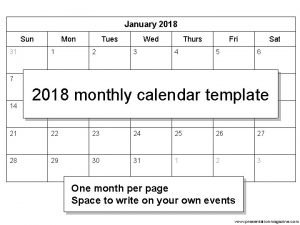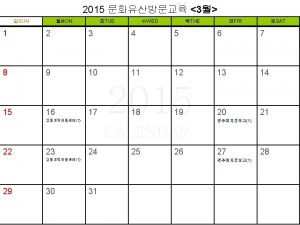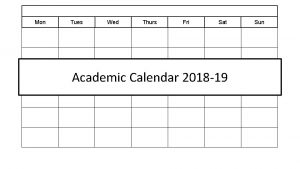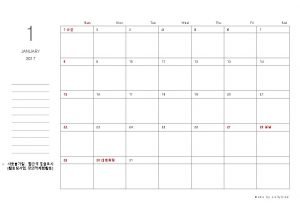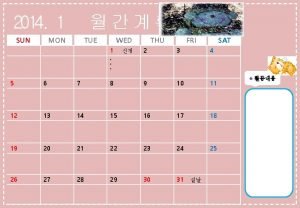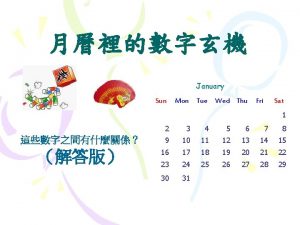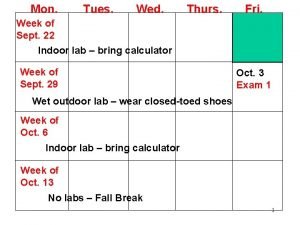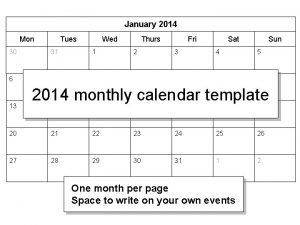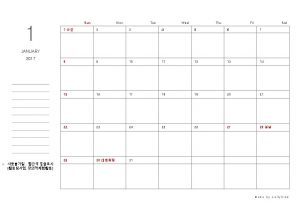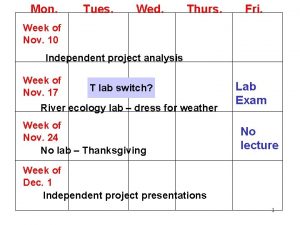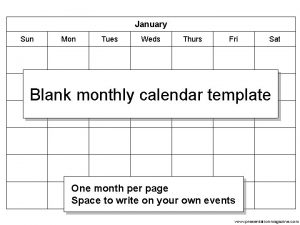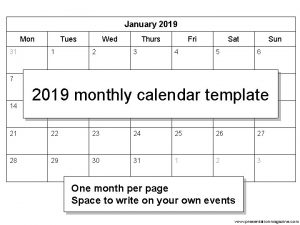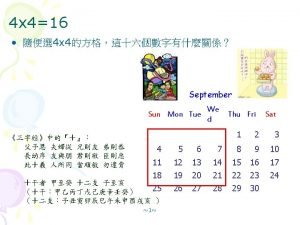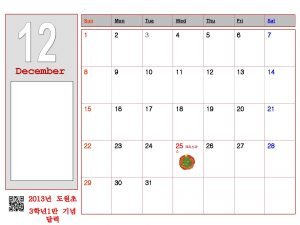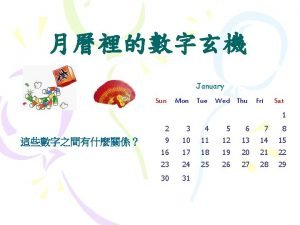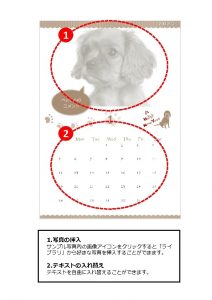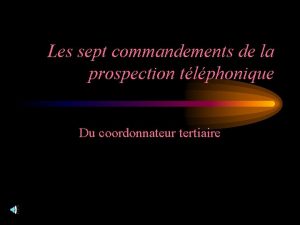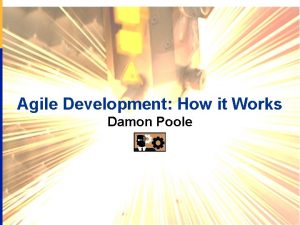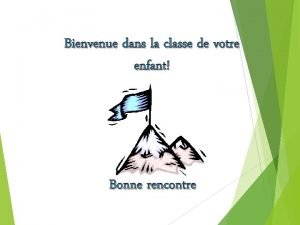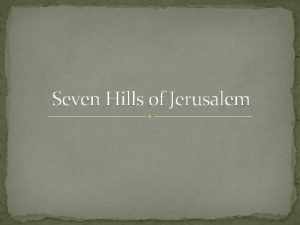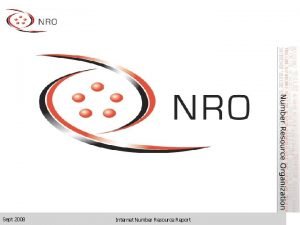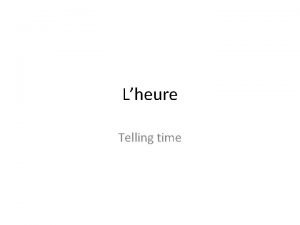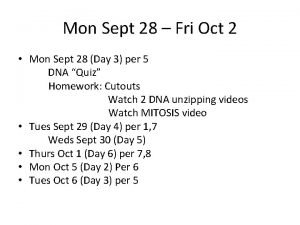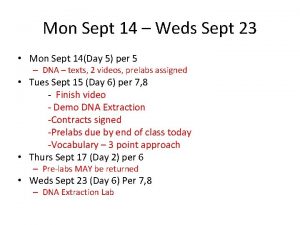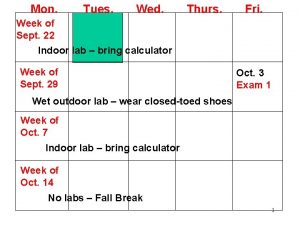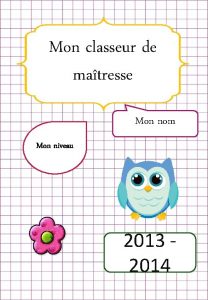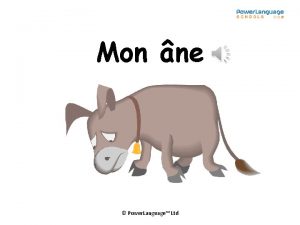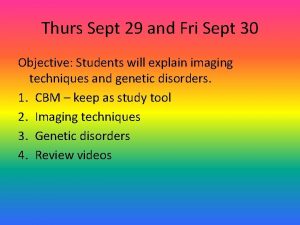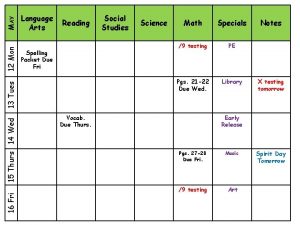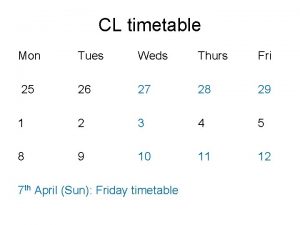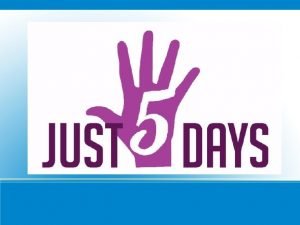Fri Sept 9 Mon Sept 12 Intro to


































- Slides: 34

Fri, Sept 9 Mon, Sept 12 Intro to Archeology On a piece of loose leaf paper, write down 3 key things to remember from the syllabus

Do Now • Put signed syllabus in class tray • Take out your binder and tabs 1. Tab 1: Class Documents (put syllabus here) 2. Tab 2: Notes/Handouts: Tape together your Timeline of Human History and put in 3. Tab 3: Homework (for example, Letter to Ms. Bell) 4. Tab 4 Graded Work

Chronology Terms n n Decade: Century: Millennium: CE/BCE:

How Do We Know What Happened Thousands of Years Ago? Archeology!

Daily Objectives n n n Students will understand what an archeologists does and how they use fossils and artifacts to tell us about prehistoric times Students will know the names, time periods, and characteristics of several hominids Students will be able to make observations and inferences about artifacts

Do Now Pick out 1 item that you have on you or in your backpack, Place these items on your desk n What conclusions will the class be able to draw about you based on these artifacts? n What information would be impossible to know from the items in the backpack? n Are all guesses accurate? Why not?

Archeology Terms n n n Archeology: Science of uncovering clues about early human life Make observations: something one has seen, heard, or noticed. Make inferences: educated guesses based on observations

Vocabulary of Archeology n n n Archeologists Observation Inference Artifacts Fossils Site

Fossils/Artifacts 1. Fossils are remains of living things (plants, animals, people), not of things that were made. 2. Artifacts are remains of things that were made, not the remains of living things.

What is a site? A "site" is a place archaeologists wish to explore. At the site, archaeologists literally dig, looking for the remains of ancient civilizations. That is why they call the site at which they are working a “dig”.

Grids & Labeling Before they begin digging, archaeologists design a grid on the ground using rope and string. Each square in the grid must be carefully searched. A record must be kept of anything found, including what was found next to it.

Dating Artifacts & Fossils n Process called Carbon Dating

How Carbon Dating Works n https: //www. youtube. com/watch? v=ph. Ze. E 7 At t_s

Hominids n Hominids: humans and other creatures that walk upright

Hominids

Australopithecus afarensis: n n n 3. 9 -3. 0 million years ago early hominid, fossils only found in Africa Brain 1/3 of the size of a modern human Bipedal Simple Tools

Homo habilis: n n 1. 9 -1. 5 million years ago “handy man” for its tool-making ability Slightly larger brain than Australopithecus Stone tools

Homo erectus n n “Upright Man” 1. 6 million - 30, 000 B. C. E. , brain size a bit larger than homo habilis first to use fire, used tools to hunt, spoken language, first to migrate

Homo sapien neanderthalensis n n 230, 000 -30, 000 years ago Some scientists think it is unrelated to humans Different brain shape, similar size to modern humans Pointed, sharp tools

Homo Sapien: n n scientific name meaning “Wise Man” lived from about 200, 000 B. C. E. to today, brain size of modern humans specialized tools


You Be the Archeologist n 8 Stations

Let’s Check

Common Ancestor n http: //www. history. com/shows/mankind-thestory-of-all-of-us/videos/mankind-the-story-ofall-of-us-the-earliesthumans? m=518971 d 79 ac 04

Paleolithic n n Means Old Stone Age What do you think of cave men? Why?

Tracing Mankind’s Origins

Visual Discovery

Visual Discovery

Characteristic of Hunter-Gatherer Society n n n Nomadic (moved in search of water, food, and shelter) Invented the first tools and simple weapons Discovered Fire Lived in clans (groups of people who live together) Oral language Created “cave art”

Cave Art

Paleolithic Life n Nomadic:

Paleolithic Life n Fire n http: //www. history. com/ shows/mankind-thestory-of-all-ofus/videos/mankind-thestory-of-all-of-us-fire

Hunter-Gatherer n People or societies in which most or all food is obtained from wild plants and animals, not farming or raising animals

Paleo Diet n On Diet: n n n n Not on diet: dairy products grains legumes processed oils refined sugar Alcohol Coffee Soft drinks
 Mon tues wed thurs fri sat sun
Mon tues wed thurs fri sat sun Mon tue wed thur
Mon tue wed thur Tues wed
Tues wed Tue wed
Tue wed Sat sun mon
Sat sun mon Mon tue wed thur
Mon tue wed thur Xxxxxx 2016
Xxxxxx 2016 Mon tues wed
Mon tues wed Mon to thurs
Mon to thurs Wed thr
Wed thr Sun mon tue wed thu fri sat
Sun mon tue wed thu fri sat Sat sun mon tue wed thur fri
Sat sun mon tue wed thur fri Wed thurs fri
Wed thurs fri Mon tues wed thurs fri sat sun
Mon tues wed thurs fri sat sun Wed thurs
Wed thurs Mon tue wed thurs fri sat sun
Mon tue wed thurs fri sat sun Wed thu
Wed thu Wed thur
Wed thur Sun mon tue wed thu fri sat
Sun mon tue wed thu fri sat Mon tue wed thu fri sat sun
Mon tue wed thu fri sat sun Mon tue wed
Mon tue wed Mon tue wed thu fri sat sun
Mon tue wed thu fri sat sun Mon tue wed
Mon tue wed Sept commandements
Sept commandements Damon poole
Damon poole Sept comme setteur questionnaire
Sept comme setteur questionnaire Seven mountains of jerusalem
Seven mountains of jerusalem Suture to stabilize suffix
Suture to stabilize suffix Un deux trois quatre cinq six sept huit neuf dix
Un deux trois quatre cinq six sept huit neuf dix Poesie le dernier sapin de truchi
Poesie le dernier sapin de truchi Cnn 10 august 31
Cnn 10 august 31 Sept
Sept Deportes
Deportes Ecrivez les sept jours de la semaine
Ecrivez les sept jours de la semaine Sept heure moins le quart
Sept heure moins le quart
